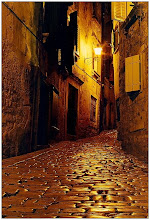Persepolis by Marjane Satrapi is the author's personal memoir about her life growing up in Iran during the Iranian revolution. The story starts off showing her as an innocent child, not understanding a lot of the things going on around her and being very devoted to god and a good cause. As it progresses, she learns more about what is happening and ultimately takes the side of her radical parents as she sees them rebelling against the corrupt political leaders. As things start to get better, they just as quickly get worse again when the new political powers turn out to be just as bad as the old. With Marjane's attitude getting more and more rebellious as she grows up, the reader gets a really good look at what growing up in that setting can do to a person. Even these days, she holds a very rebellious attitude and definitely takes after her mother in the Fine Arts aspect. With such a serious story being told, you would think the style it is drawn in to be a little rougher than it is. The way Marjane draws her characters and backgrounds is very stylized and simplified.
For me, reading through Persepolis was very enjoyable. I loved following Marjane's exploits and it was very interesting to watch her change and see the direct effects such a violent setting can have on someone. I feel she didn't leave any aspect of that out and did not try to sugar coat it in any way. I also felt more emotion to this story than I did with any other emotional story I've read so far in this course. Maus was a very powerful story and the Holocaust, for most, is always something emotional to hear about, but I felt more for the events told in Persepolis.
While the Movie and graphic memoir are very similar, almost word for word, I preferred the book much better. I liked to take in certain parts of the story bit by bit, sometimes re-reading parts as I went through. This led me to connect better with the story, something I don't think the movie could have done as well had I watched only the movie.

No comments:
Post a Comment